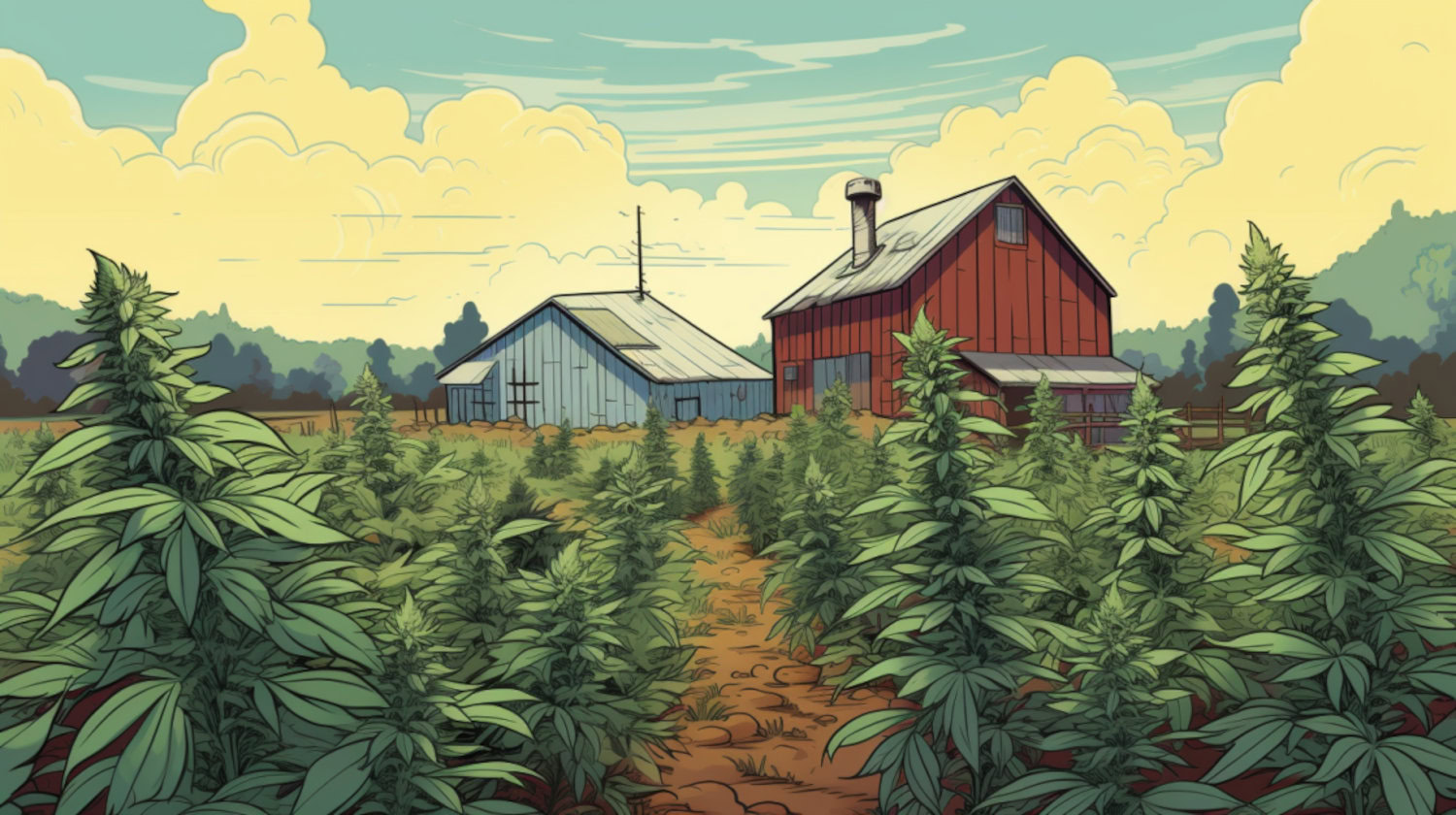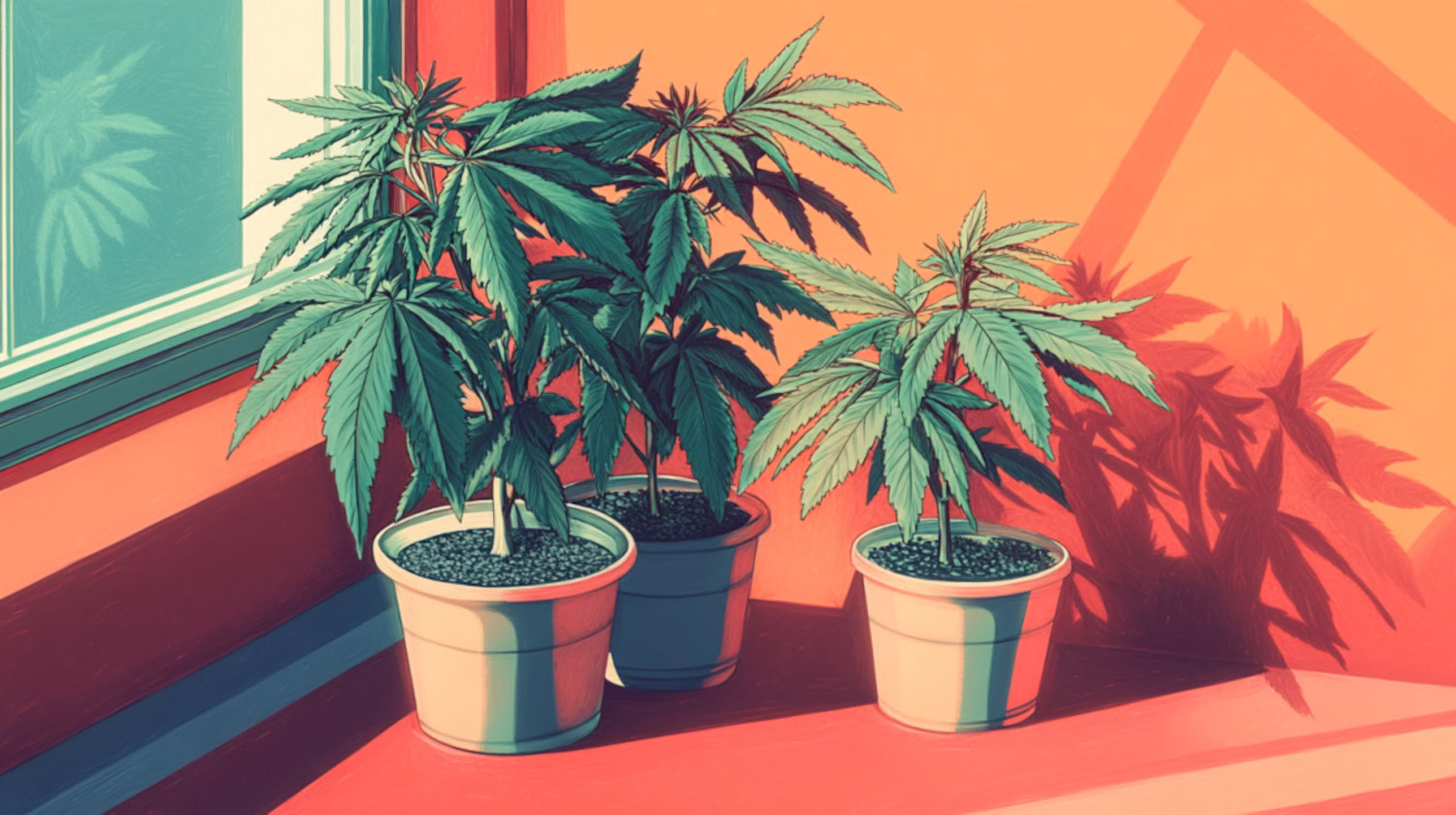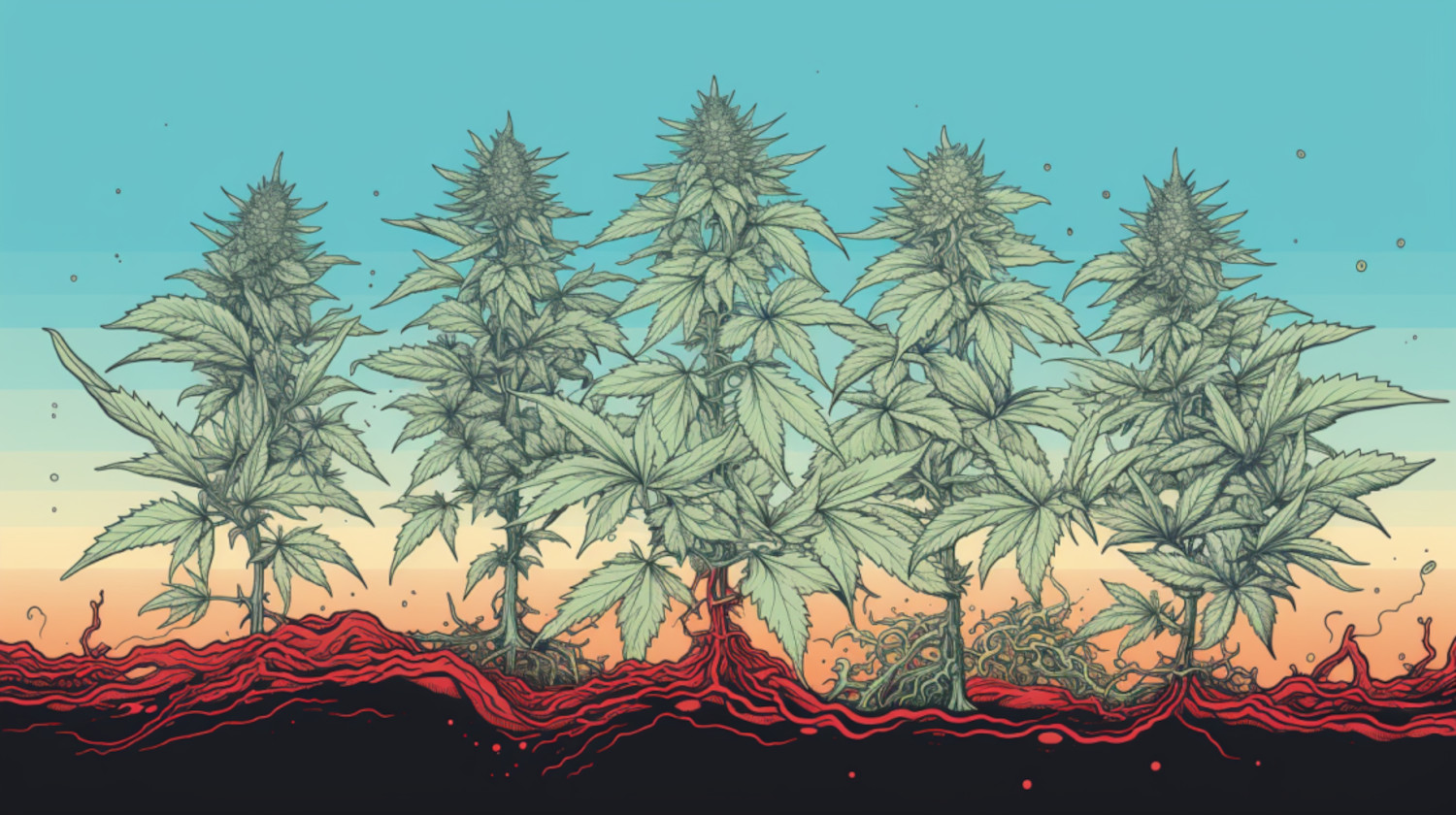In This Article
- What Does a Male Marijuana Plant Look Like?
- When Do Male Plants Pollinate Females?
- How to Prevent a Male Cannabis Plant From Pollinating Females
- 1. Isolation and Separation
- 2. Regular Inspection and Removal
- 3. Cloning Techniques
- 4. Spraying with Silver Thiosulfate (STS)
- Do Male Plants Bud?
- What About Hermaphroditic Plants?
- Does a Male Marijuana Plant Contain THC?
- Common Male Cannabis Plant Uses
- 1. Breeding and Refining Strains
- 2. Making Hemp Products
- 3. Soil Enrichment
- 4. Pest Management
- References
Key Takeaways
- Male cannabis plants contain far less THC than their female counterparts and do no produce buds.
- You can identify a male weed plant by the sac-like structures they have around their nodes.
- Growers typically use male plants for breeding and hemp fiber. Otherwise, you can compost them or use them for pest management.
In cannabis cultivation, much of the limelight shines on the female plants. Their buds are often rich in cannabinoids like THC and CBD.
Some cultivators fixate on female plants, going to great lengths to exclude male varieties. The reason? Male cannabis plants trigger seed production, diminishing the bud quality desired by consumers.
However, contrary to popular belief, male weed plants may harbor untapped potential.
What Does a Male Marijuana Plant Look Like?
Distinguishing between male and female cannabis plants is a valuable skill for any cannabis cultivator. While both possess similar structures during their early growth stages, they each have distinct features as they mature.
The easiest and most definitive way to differentiate between male and female cannabis plants is to examine their reproductive structures.
The primary feature that distinguishes male cannabis plants is their reproductive organs. Unlike female plants, which produce pistils (tiny hair-like structures) necessary for flower formation, male plants develop small, sac-like structures called pollen sacs. These sacs typically form at the nodes, where leaves and branches intersect on the plant.
When Do Male Plants Pollinate Females?
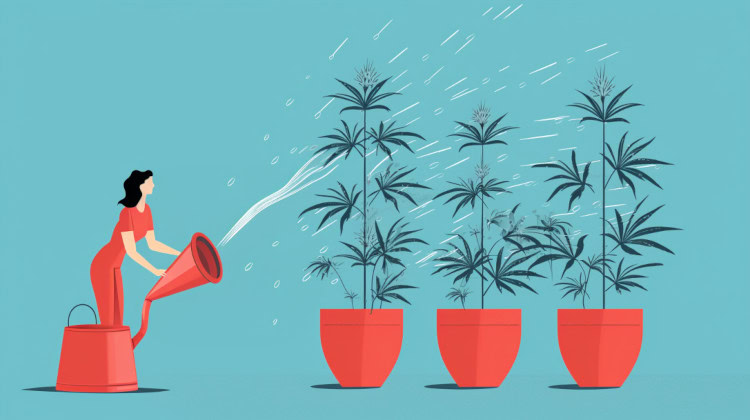
Recognizing the stages and signs at which male plants pose a pollination risk is essential to prevent unintended seed production.
Male plants begin to reveal their reproductive organs earlier than females, often during the vegetative stage. Once these male pollen sacs are evident, immediate separation is recommended to avoid the risk of pollination.
The real risk of pollination arises when male plants shed pollen. This shedding typically occurs when the male plants reach full maturity, and the pollen sacs burst open, releasing pollen into the air. At this point, if male plants are near females, they are highly susceptible to pollination.
Early signs of male plant development can be observed during the vegetative stage, becoming more apparent as the plant progresses into the pre-flowering stage. Look for the emergence of tiny sacs, which eventually turn into pollen sacs, often located at the nodes where leaves and branches intersect.
How to Prevent a Male Cannabis Plant From Pollinating Females
Growers must take proactive measures to avoid unintended pollination and preserve the quality of female cannabis plants. Several methods can effectively prevent male plants from pollinating their female counterparts.
1. Isolation and Separation
The most direct and effective method is physical isolation. This involves separating male plants from female plants as soon as their sex is identifiable.
Physical separation is the most common method for isolating and involves separating male and female plants in different rooms, greenhouses, or barriers. Timing manipulation means planting or manipulating flowering times of male and female plants so they don't overlap, preventing pollen transfer.
2. Regular Inspection and Removal
Regular inspection and removal of male cannabis plants is a necessary step in preventing pollination and maintaining the desired characteristics of a cannabis crop. Cannabis plants can exhibit sexual dimorphism, meaning male and female flowers appear on separate plants. To ensure the cultivation of seedless, high-potency buds, you should strive to identify and eliminate male plants before they reach the flowering stage.
By promptly removing the male plants, cultivators can mitigate the risk of cross-pollination, preserving the quality and potency of the female flowers for a successful harvest of seedless cannabis buds.
3. Cloning Techniques
Cloning techniques offer a strategic and efficient approach for cannabis growers aiming to prevent male plants from pollinating their female counterparts.
Through cloning, cultivators can duplicate genetically identical copies of a desired female plant, allowing them to maintain specific traits and characteristics without male plants. This process involves taking a cutting, or clone, from a healthy and vigorous female plant and encouraging it to root and develop into an independent specimen.
By relying on cloning techniques, growers can exert greater control over their cannabis crop. This fosters a more predictable and consistent cultivation environment while eliminating the potential challenges associated with male plants.
4. Spraying with Silver Thiosulfate (STS)
Spraying plants with Silver Thiosulfate (STS) is a technique used to create feminized seeds.
STS works by blocking the action of ethylene, a plant hormone that promotes female flower development.1 By blocking ethylene, STS essentially tricks the female plant into producing male pollen sacks, which can then be used to pollinate another female plant. The resulting seeds will be feminized, meaning they should only produce female plants; however, they are not always 100% guaranteed.
Exercise caution when using this method, following safe practices for handling chemicals like silver nitrate, and other important safety measures.
Do Male Plants Bud?
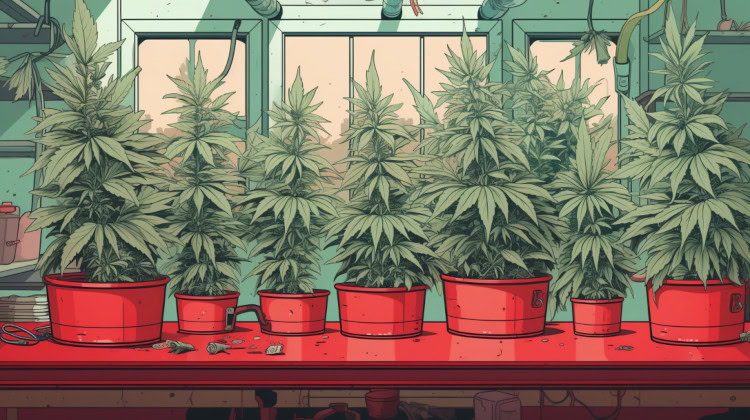
Male cannabis plants have a different biological purpose compared to females. Unlike female plants, males do not produce the sought-after buds rich in cannabinoids. The buds, also known as flowers or colas, are the female reproductive structures containing the highest concentrations of THC, CBD, and other cannabinoids.
What About Hermaphroditic Plants?
In rare instances, cannabis plants can present with both male and female reproductive organs. In such cases, female flowers or bud-like structures might emerge alongside the pollen sacs. However, the quality and cannabinoid content of these structures typically do not match those found in the female-only buds.
As a general rule, remember that male cannabis plants do not produce buds highly valued for their cannabinoid content. Instead, they focus on producing pollen sacs essential for fertilizing female plants, enabling seed production.
Cultivators must differentiate between male and female plants, understanding that while males play a vital role in reproduction, they do not yield the resinous buds sought for consumption.
Does a Male Marijuana Plant Contain THC?
Male cannabis plants do not produce the same level of THC as their female counterparts. However, small quantities of THC might be present in the leaves, albeit in minimal amounts. Trichomes, the tiny hair-like structures responsible for cannabinoid production, can be found on male plants, although in far fewer numbers than female plants.
The THC found in male plants is generally considered negligible and not practically usable. Therefore, male plants are not cultivated or utilized for their cannabinoid content.
Common Male Cannabis Plant Uses
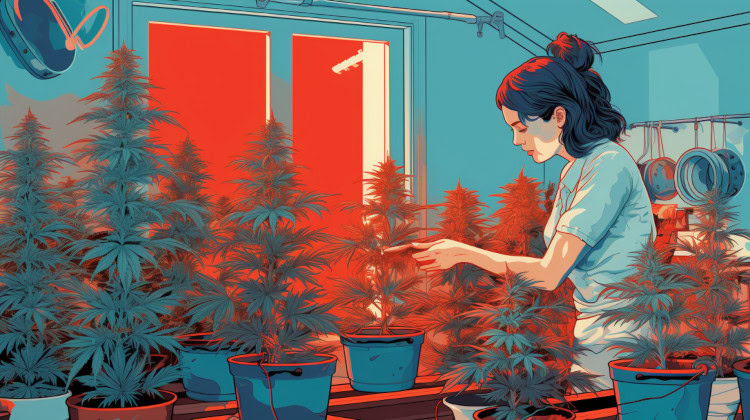
Contrary to popular belief, male cannabis plants have various valuable applications beyond their primary role in reproduction. Although they don't produce the resinous buds rich in cannabinoids like their female counterparts, male plants offer several practical uses for growers and enthusiasts.
1. Breeding and Refining Strains
Male cannabis plants are essential for breeding and cultivating cannabis, serving a primary role in the creation of diverse genetic strains.
Through cross-pollination with female plants, male plants contribute to developing hybrid varieties with specific traits such as enhanced potency, unique flavors, and resilience to environmental factors. This meticulous breeding process involves carefully selecting male plants based on desired characteristics, leading to the refinement and enhancement of cannabis strains.
Male cannabis plants play a critical role in seed production, facilitating the formation of seeds when they pollinate female flowers. These seeds carry the genetic information from both parent plants, serving as the foundation for future cultivation.
Ultimately, male plants contribute to the evolution and diversity of cannabis strains and the preservation of genetics. They ensure a continuous supply of seeds for growers to propagate and cultivate the same strain over multiple generations.
2. Making Hemp Products
Male cannabis plants, with a specific emphasis on those cultivated for industrial hemp, offer a valuable resource in the form of durable fibers that have a wide range of applications.
One notable application of these fibers is in the production of ropes. Hemp ropes have historically been used in maritime settings, thanks to their resistance to wear and tear and their ability to withstand exposure to harsh environmental conditions.
The fibers from male hemp plants are also employed in the textile industry, contributing to the creation of fabrics with unique properties. These textiles are known for their strength, breathability, and versatility. They can be used to manufacture clothing, accessories, and even technical textiles for specialized applications. The sustainable and eco-friendly nature of hemp textiles also aligns with the increasing demand for environmentally conscious products.
3. Soil Enrichment
When incorporated into compost piles, the leaves and stems of male cannabis plants become valuable contributors to the organic matter within the soil. Composting these plant materials facilitates the breakdown of complex compounds into nutrient-rich substances. As decomposition occurs, essential elements such as nitrogen, phosphorus, and potassium are released into the soil, acting as natural fertilizers.
Adding male cannabis plant residues to compost introduces essential nutrients and improves the soil's overall structure. The organic matter derived from these plant parts enhances the soil's water retention capacity, promotes aeration, and encourages beneficial microbial activity. This, in turn, creates an environment conducive to healthy plant growth.
4. Pest Management
Using extracts derived from male cannabis plants can offer a natural and effective solution for managing garden pest-related issues. Male cannabis plants contain compounds such as terpenes that can serve as potent natural repellents against pests.
Terpenes are aromatic compounds found in most plants, including cannabis, known for their distinct scents. In male cannabis plants, certain terpenes exhibit properties that act as deterrents for pests, helping to protect the garden from potential infestations.2
Integrated pest management involves combining techniques to control pests in a sustainable and environmentally friendly manner. By strategically incorporating male cannabis plants through a method called companion planting, gardeners can create a holistic approach to pest control that aligns with eco-conscious gardening practices.3
References
- Lubell JD, Brand MH. Foliar Sprays of Silver Thiosulfate Produce Male Flowers on Female Hemp Plants. HortTechnology. 2018;28(6):743-747. doi:https://doi.org/10.21273/horttech04188-18 ↩︎
- Boncan DAT, Tsang SSK, Li C, et al. Terpenes and Terpenoids in Plants: Interactions with Environment and Insects. International Journal of Molecular Sciences. 2020;21(19):7382. doi.org/10.3390/ijms21197382 ↩︎
- Parker JE, Snyder WE, Hamilton GC, Rodriguez‐Saona C. Companion Planting and Insect Pest Control. InTech eBooks. Published online March 14, 2013. doi:https://doi.org/10.5772/55044 ↩︎
The information in this article and any included images or charts are for educational purposes only. This information is neither a substitute for, nor does it replace, professional legal advice or medical advice, diagnosis, or treatment. If you have any concerns or questions about laws, regulations, or your health, you should always consult with an attorney, physician or other licensed professional.

